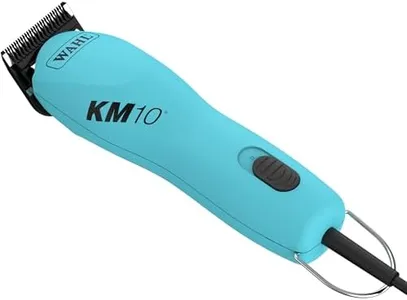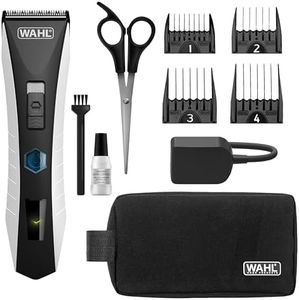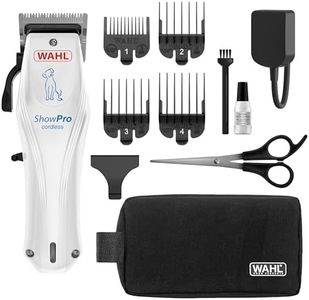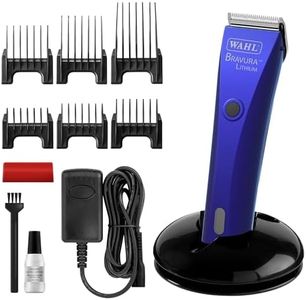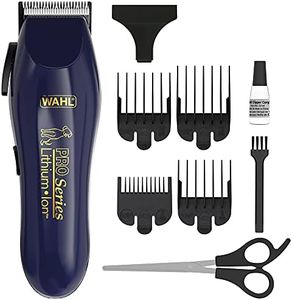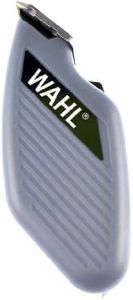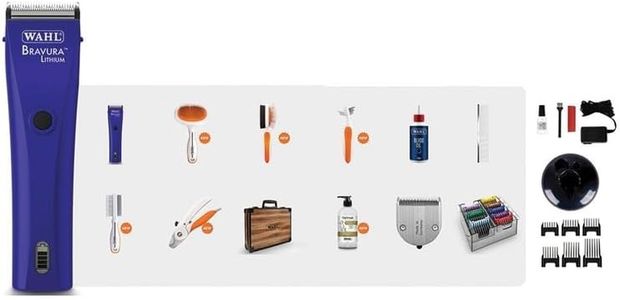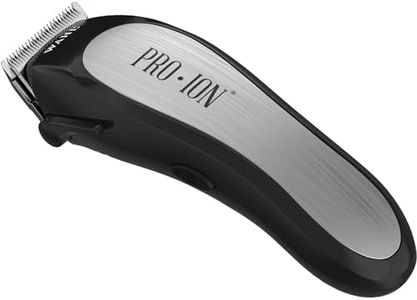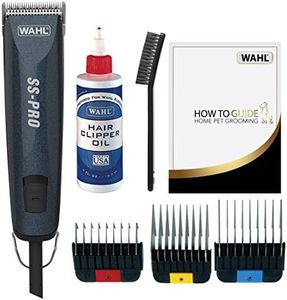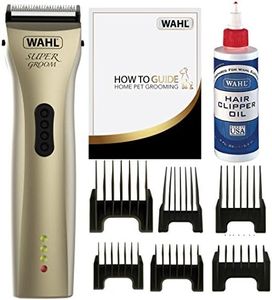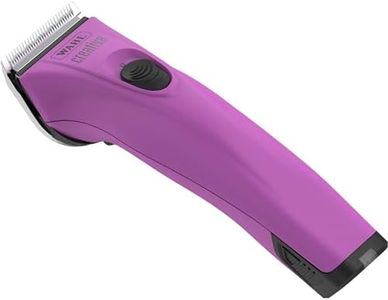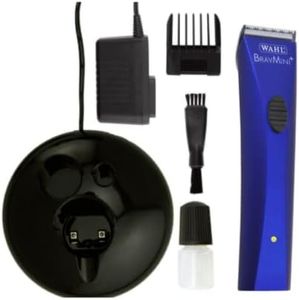We Use CookiesWe use cookies to enhance the security, performance,
functionality and for analytical and promotional activities. By continuing to browse this site you
are agreeing to our privacy policy
10 Best Wahl Pet Clippers
From leading brands and best sellers available on the web.Buying Guide for the Best Wahl Pet Clippers
Choosing the right pet clipper is important to make the grooming experience comfortable, safe, and effective for both you and your pet. Since pet coats can vary a lot in type, thickness, and length, it's essential to match the clipper's features to your needs. Consider how often you plan to use the clipper, what sort of fur your pet has, and whether you'll be doing full grooming sessions or just quick touch-ups.Motor PowerMotor power refers to how strong and fast the clipper blades move. This is important because thicker, coarser, or matted fur requires more cutting strength, while lighter coats need less. You will usually find clippers labeled as low, medium, or high power. Lightweight motors are quiet and gentle, great for pets with thin coats or for tidying up between full grooms. Medium power is versatile, suitable for most regular fur types. High-power motors are necessary for dense, double, or matted coats. Choose based on your pet’s fur type: for tough jobs with lots of bulk or tangles, opt for higher power, but for a quieter, less intimidating experience with a small or short-haired pet, lower power is preferable.
Blade Type and QualityBlade type and quality determine how effectively and safely the clipper cuts hair. Blades come in steel, ceramic, or a mix of both, and have different tooth sizes for coarse or fine cutting. Steel blades are durable and good for most everyday work, while ceramic blades stay cooler and sharper for longer, which is handy for long sessions or sensitive pets. Some blades can be detached and swapped for different lengths or types. If you’ll be doing varied grooming or want the easiest maintenance, go for clippers with detachable or adjustable blades. For one pet with a consistent coat, a fixed high-quality blade is usually enough.
Corded vs. CordlessThis specification refers to whether the clipper needs to be plugged in (corded) or can run on batteries (cordless). Corded clippers provide constant power and are good for longer sessions, but require you to work within reach of an outlet. Cordless clippers offer freedom of movement and are easier to maneuver, especially with wriggly pets, but they need charging and have a limited run time. If you plan to groom multiple pets or do full trims, a corded clipper might be better. For portability, quick trims, or nervous pets who might tangle in cords, cordless is ideal.
Noise and Vibration LevelThe amount of noise and vibration a clipper makes can affect your pet's comfort. Some pets don’t mind noise, but nervous or sensitive animals may be frightened by loud or harsh vibrations. Clippers are rated as low, medium, or high noise/vibration. For breeds or personalities that are nervous or for first-time grooming at home, pick the quietest and smoothest running model you can find. If your pet is used to grooming, mid-level devices are usually adequate.
Maintenance RequirementsMaintenance refers to how much effort it takes to keep the clipper clean and functioning. Some models need regular oiling, blade washing, or parts replacement. Easy-clean bodies and self-sharpening blades are convenient for beginners. If you prefer minimal fuss, look for clippers that advertise low maintenance or come with cleaning accessories. If you’re willing to spend extra time caring for your tools, you can consider more complex models that might offer better performance but more upkeep.
